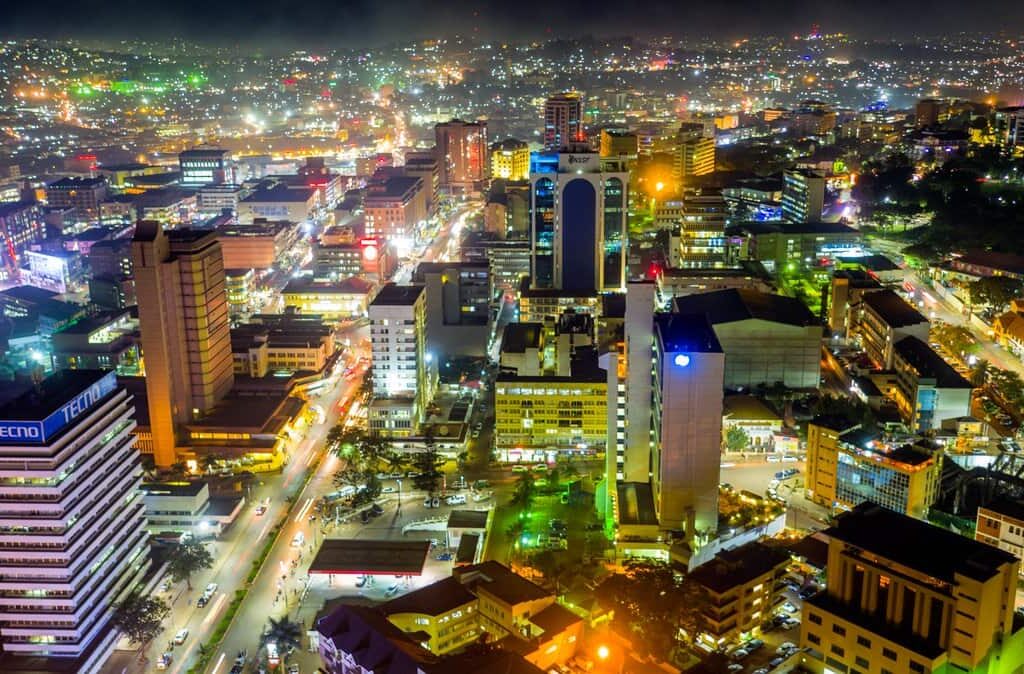Kampala, the capital city of Uganda, is a place where tradition meets modernity, where hills are crowned with bustling neighborhoods, and where the rhythms of daily life mix with a rich cultural heritage. Known for its warm and friendly people, Kampala offers a colorful blend of history, religion, markets, nightlife, and lakeside charm.
Whether you’re a first-time visitor or a returning traveler, Kampala serves as more than just a gateway to Uganda’s national parks, it’s a destination full of exciting attractions worth exploring.
1. Uganda Museum – A Journey Through History
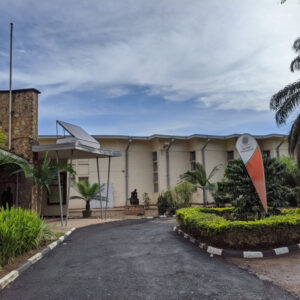 The Uganda Museum, located in the Kamwokya area, is the oldest museum in East Africa, established in 1908. It showcases Uganda’s cultural heritage, archaeological findings, and ethnographic exhibits.
The Uganda Museum, located in the Kamwokya area, is the oldest museum in East Africa, established in 1908. It showcases Uganda’s cultural heritage, archaeological findings, and ethnographic exhibits.
Visitors can explore traditional musical instruments (which you can even try playing), hunting tools, traditional clothing, and a fascinating outdoor village museum that displays traditional huts from different Ugandan tribes.
Why visit: It’s the perfect starting point for understanding Uganda’s diverse cultures before exploring the rest of the country.
2. Kasubi Tombs – A UNESCO World Heritage Site
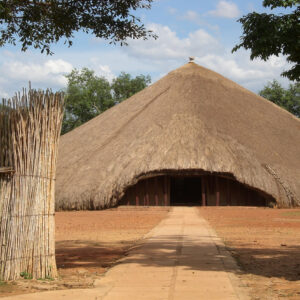 The Kasubi Tombs are the burial grounds of four former kings (Kabakas) of Buganda Kingdom. The site, located on Kasubi Hill, is an important spiritual and political location for the Baganda people.
The Kasubi Tombs are the burial grounds of four former kings (Kabakas) of Buganda Kingdom. The site, located on Kasubi Hill, is an important spiritual and political location for the Baganda people.
The tombs are housed in a large, beautifully crafted thatched structure, one of the largest in the world. Although damaged by a fire in 2010, restoration efforts are ongoing, and the site remains an iconic landmark.
Why visit: It offers a unique glimpse into the traditions and monarchy of one of Africa’s most influential kingdoms.
3. Kabaka’s Palace (Lubiri) – The Royal Residence
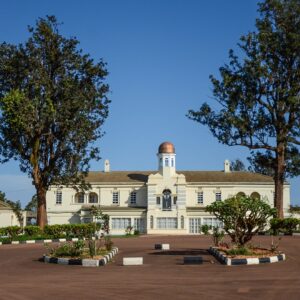 Situated on Mengo Hill, the Kabaka’s Palace is the official residence of the King of Buganda. The palace grounds are open for guided tours, which often include a walk down the infamous “Torture Chambers” built during the regime of Idi Amin.
Situated on Mengo Hill, the Kabaka’s Palace is the official residence of the King of Buganda. The palace grounds are open for guided tours, which often include a walk down the infamous “Torture Chambers” built during the regime of Idi Amin.
The royal architecture, historical artifacts, and stories from guides make this a fascinating place to learn about Uganda’s past, both regal and turbulent.
4. Bahá’í Temple – A Hilltop of Peace
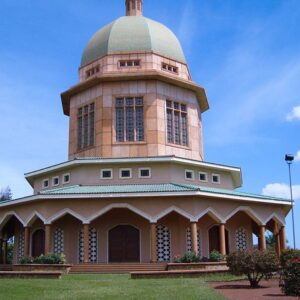 Perched on Kikaya Hill, the Bahá’í Temple in Kampala is the only Bahá’í House of Worship in Africa. Completed in 1961, the temple features stunning architecture with a nine-sided dome surrounded by lush gardens.
Perched on Kikaya Hill, the Bahá’í Temple in Kampala is the only Bahá’í House of Worship in Africa. Completed in 1961, the temple features stunning architecture with a nine-sided dome surrounded by lush gardens.
Visitors are welcome to walk through the peaceful grounds, enjoy the panoramic city views, and learn about the Bahá’í faith.
Why visit: It’s one of the most serene spots in Kampala, perfect for relaxation and reflection.
5. Namirembe Cathedral – Uganda’s Oldest Anglican Church
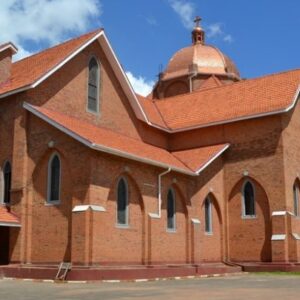 Namirembe Cathedral, officially known as St. Paul’s Cathedral Namirembe, sits on Namirembe Hill and serves as the provincial cathedral for the Church of Uganda. Built in 1919, it features red brick walls, wooden ceilings, and sweeping views over the city.
Namirembe Cathedral, officially known as St. Paul’s Cathedral Namirembe, sits on Namirembe Hill and serves as the provincial cathedral for the Church of Uganda. Built in 1919, it features red brick walls, wooden ceilings, and sweeping views over the city.
The cathedral’s history is closely tied to the arrival of Christianity in Uganda, making it a significant landmark for religious and cultural tourism.
6. Rubaga Cathedral – The Mother Church of Catholicism in Uganda
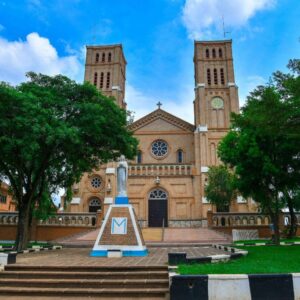 Rubaga Cathedral, also known as St. Mary’s Cathedral, is perched on Rubaga Hill. It’s the headquarters of the Catholic Church in Uganda and was built in the early 20th century by French missionaries.
Rubaga Cathedral, also known as St. Mary’s Cathedral, is perched on Rubaga Hill. It’s the headquarters of the Catholic Church in Uganda and was built in the early 20th century by French missionaries.
The cathedral’s twin bell towers, stained-glass windows, and peaceful compound make it an architectural and spiritual attraction.
7. Nakasero Market – The Heart of Local Life
No trip to Kampala is complete without a visit to Nakasero Market, the city’s bustling fresh produce hub. Here, traders sell everything from tropical fruits and vegetables to spices, fabrics, and household goods.
Walking through the market is a sensory experience, the colors, smells, and sounds capture Kampala’s vibrant everyday life.
8. Old Taxi Park – A Chaotic but Iconic Landmark
The Old Taxi Park is the epicenter of Kampala’s public transport system, where hundreds of matatus (minibuses) converge. It’s a hive of activity, with drivers calling out destinations, vendors weaving through crowds, and commuters in constant motion.
While it’s not a traditional “attraction,” it’s an authentic snapshot of urban life in Uganda.
9. Owino Market (St. Balikuddembe Market) – Shopping on a Grand Scale
Owino Market is one of East Africa’s largest markets, selling second-hand clothes, shoes, electronics, and household goods. It’s chaotic, energetic, and full of bargains for those willing to dig through piles and haggle with vendors.
Why visit: It’s a cultural experience that immerses you in Kampala’s entrepreneurial spirit.
10. Ndere Cultural Centre – Uganda in Song and Dance
For a taste of Uganda’s performing arts, head to the Ndere Cultural Centre. It hosts regular evening performances of traditional music, dance, and storytelling from Uganda’s various tribes.
Guests can enjoy a delicious buffet of Ugandan cuisine while watching the show under the stars.
Best time to visit: Wednesday, Friday, and Sunday evenings for the main performances.
11. Independence Monument – A Symbol of Freedom
Located on Speke Road, the Independence Monument commemorates Uganda’s independence from British colonial rule in 1962. The sculpture depicts a man lifting a child toward the sky, symbolizing the nation’s liberation and hope for the future.
It’s a quick but meaningful stop, especially for those interested in Uganda’s modern history.
12. Gaddafi National Mosque – The Largest in East Africa
On Old Kampala Hill stands the Gaddafi National Mosque, a massive structure completed in 2006 with funding from the late Libyan leader Muammar Gaddafi. It serves as the headquarters of the Uganda Muslim Supreme Council.
Visitors can climb to the top of the minaret for 360-degree views of Kampala’s rolling hills and bustling streets.
13. Local Food Experiences – Taste Kampala
Kampala’s culinary scene is as diverse as its culture. Street vendors sell rolex (chapati rolled with eggs and vegetables), while restaurants serve everything from traditional Ugandan dishes like matoke and groundnut sauce to international cuisine.
14. Nightlife – Kampala After Dark
Kampala is famous for its vibrant nightlife, with clubs, bars, and live music venues staying open well into the early hours. Areas like Kololo, Kabalagala, and Bugolobi are nightlife hotspots, offering everything from high-energy dance clubs to laid-back lounges.
Popular venues include; Sky Lounge, Guvnor, and Bubbles O’Learys.
15. Lake Victoria Shores – A Breath of Fresh Air
Just a short drive from the city center, the shores of Lake Victoria offer a relaxing escape. You can enjoy fresh tilapia at lakeside restaurants, take boat rides to nearby islands, or simply watch the sunset over the water.
Popular spots include; KK Beach, Ggaba Landing Site, and Lutembe Bay (famous for birdwatching).
Practical Tips for Visiting Kampala
Best Time to Visit: June–August and December–February are the dry seasons and best for sightseeing.
Getting Around: Use taxis, boda-bodas (motorcycle taxis), or ride-hailing apps like SafeBoda and Uber.
Safety: Kampala is generally safe, but be cautious with valuables in crowded areas.
Dress Code: Light clothing is fine, but dress modestly when visiting religious sites.
Why Kampala Should Be on Your Travel List
Kampala is more than just a stopover on the way to Uganda’s national parks — it’s a city full of character, history, and warmth. From royal palaces to bustling markets, serene temples to lively nightlife, Kampala captures the spirit of Uganda in one vibrant package.

